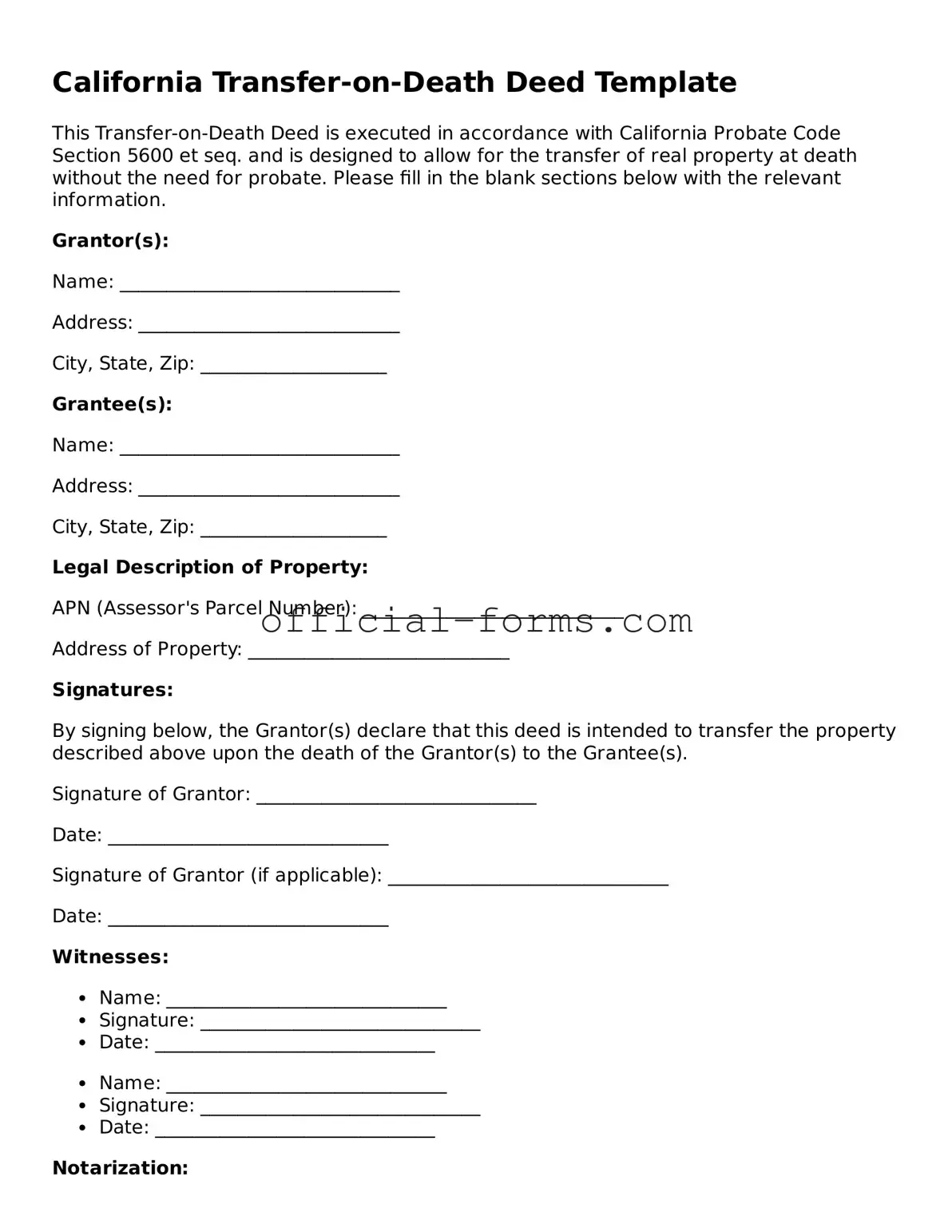Filling out the California Transfer-on-Death Deed form can be a straightforward process, but many people make common mistakes that can lead to complications down the road. Understanding these pitfalls can help ensure that your intentions are properly documented and honored.
One frequent error is failing to include the correct legal description of the property. A vague or incorrect description can create confusion about which property is intended for transfer. It is essential to provide a precise description, often found in the property’s title deed, to avoid any disputes among heirs.
Another common mistake involves not signing the deed in front of a notary public. California law requires that the Transfer-on-Death Deed be notarized to be valid. Without this crucial step, the deed may not hold up in court, leaving your wishes unfulfilled.
People also sometimes neglect to record the deed with the county recorder’s office. Even if the deed is completed and notarized, it must be filed to take effect. Failing to do so can result in the deed being disregarded, and the property may pass according to intestate succession laws instead of your wishes.
Additionally, some individuals mistakenly think that a Transfer-on-Death Deed can be revoked without any formal process. While it is true that you can revoke the deed, it must be done through a specific procedure. Simply tearing up the document or marking it as revoked does not suffice legally.
Confusion often arises around the beneficiaries named in the deed. It is crucial to clearly identify each beneficiary, including full names and relationships to the deceased. Omitting this information or using nicknames can lead to misunderstandings and potential legal disputes among family members.
Another oversight is not considering the implications of community property laws in California. If the property is owned jointly with a spouse, both parties must agree to the transfer. Failing to address this can result in complications during the transfer process.
People sometimes underestimate the importance of keeping the deed updated. Life changes such as marriage, divorce, or the birth of a child can affect who should inherit the property. Regularly reviewing and updating the deed can help ensure that it reflects your current wishes.
Lastly, many individuals do not seek legal advice when filling out the form. While the process may seem simple, consulting with an attorney can provide clarity and help avoid mistakes that could have lasting consequences. Legal guidance can ensure that your deed meets all requirements and aligns with your overall estate plan.
